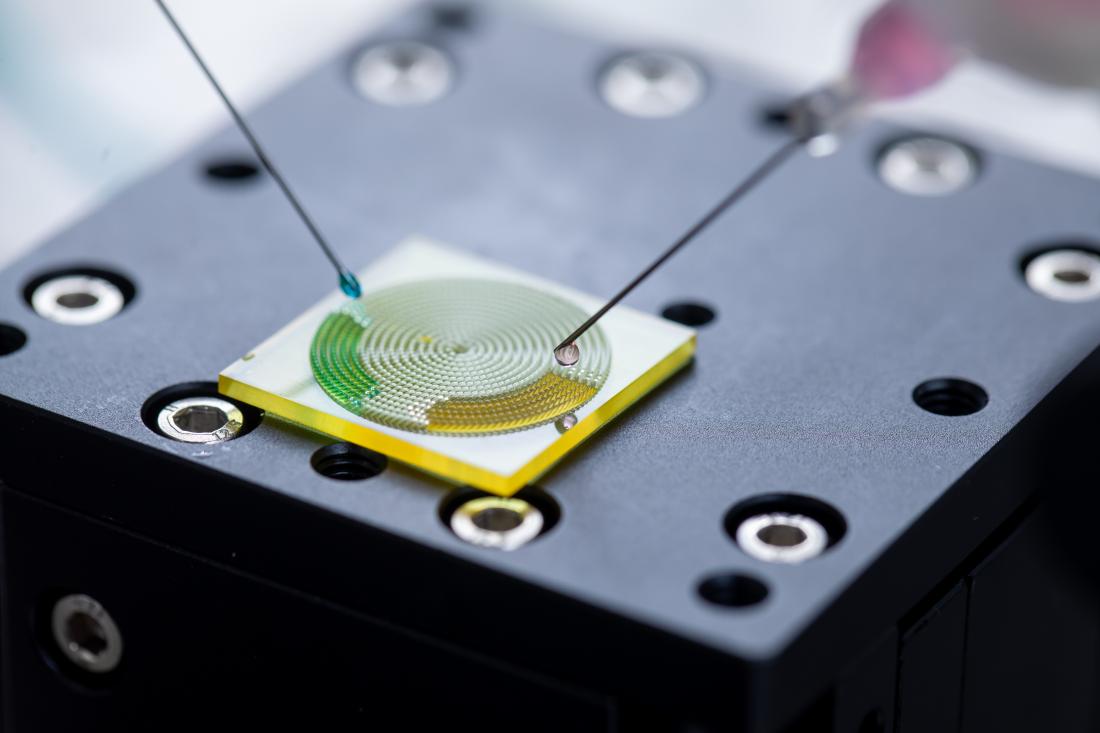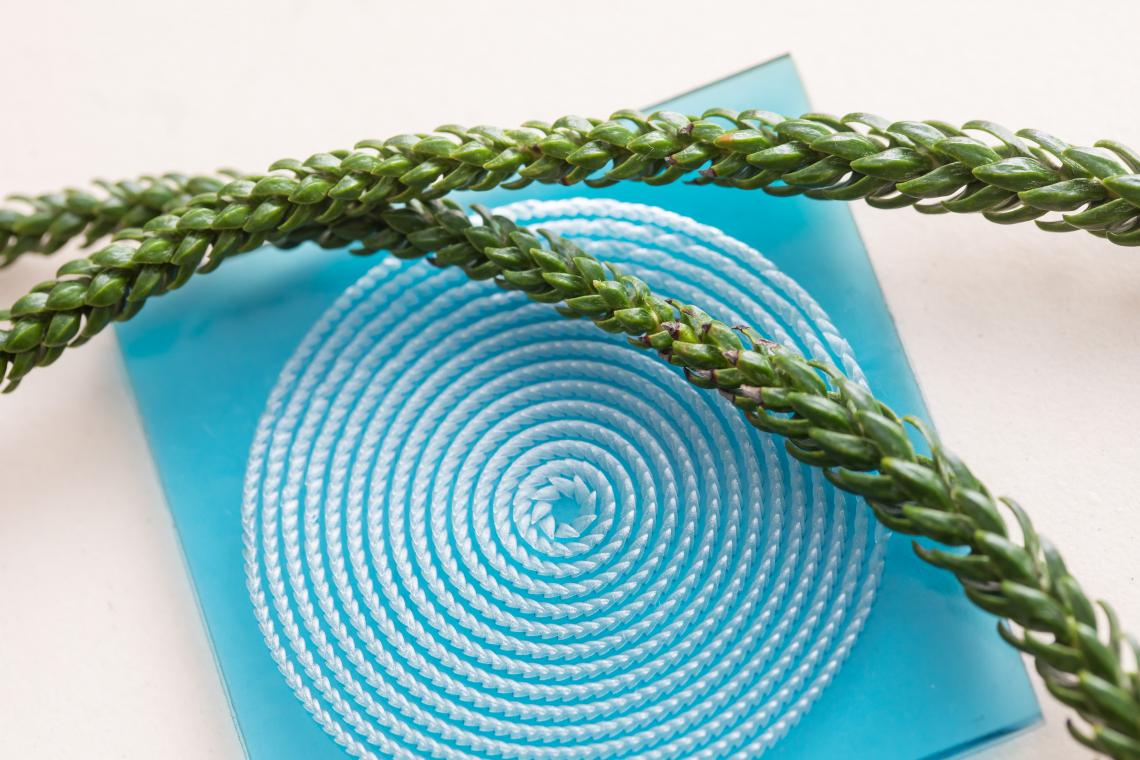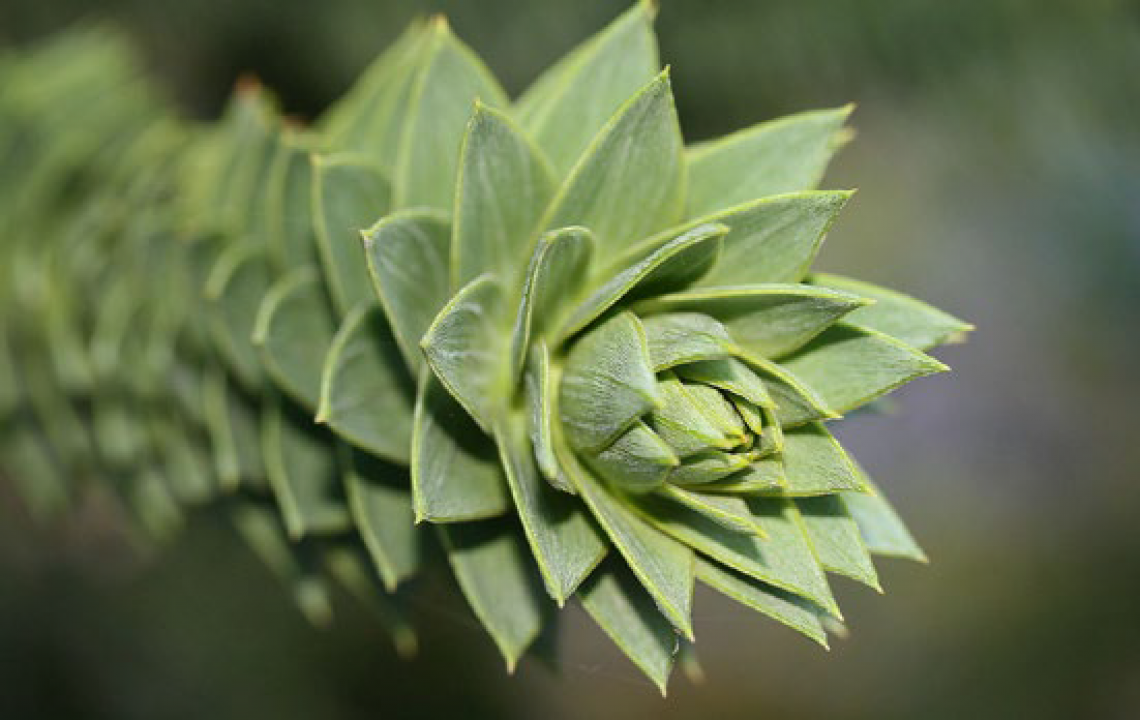This story is featured in the Asia Research News 2022 magazine. If you would like to receive regular research news, join our growing community.
Get the news in your inbox
Liquids with different surface tensions can spread along the same 3D surface in different directions, a discovery that overturns conventional understanding of liquid movement. The finding, inspired by studies of a tree leaf, was published by scientists at City University of Hong Kong (CityU) in the journal Science. It could lead to the use of 3D surface structures to manipulate liquid flow, with applications in microfluidics and electronics.
Araucaria leaf and the leaf-inspired 3D surface
“For the past two centuries, conventional understanding has been that a liquid deposited on a surface tends to move in a direction that reduces surface energy. This means its movement is largely determined by the surface’s structure and not by the liquid’s properties,” says CityU mechanical engineer Zuankai Wang.
But the unique surface structure of a leaf from the Araucaria tree caught the attention of one of Wang’s former post-docs, Shile Feng, while at a theme park in Hong Kong. The leaf has periodically arranged ratchets that tilt towards the leaf’s tip. Each ratchet curves from top to bottom and side to side, has a smooth under surface, and a tip.
Back at the lab, Feng, Wang and their colleagues were surprised to find that liquids with different surface tensions spread in opposite directions on the leaf.
This led them to design a surface inspired by the leaf, with one-millimetre, 3D-printed, polymer ratchets organized in concentric circles. They found that different water-ethanol mixtures with varying surface tensions either spread forwards, backwards or in both directions on the horizontally-placed structure.
“The rational design of the novel ratchets enabled liquids to ‘decide’ their spreading direction based on the interplay between their surface tension and the surface’s structure,” says Wang. “It was like a miracle observing the different directional flows of various liquids. This was the first recorded observation of this kind in the scientific world.”
Specifically, liquids with high surface tension, like water, were pinned at the tip of the ratchet. Water was then able to move backwards against the ratchet’s tilt because the space between ratchets was similar to water’s capillary length, a measure governed by gravity and surface tension. In contrast, low surface tension drove liquids like ethanol forwards along the ratchet’s tilt.
“By adjusting the proportion of water and ethanol in the mixture, we were able to change the mixture’s surface tension and manipulate the liquid flow direction,” says CityU mechanical engineer Pingan Zhu, who was also involved in the study.
The findings provide a way to guide the flow of liquid to a target destination, opening a new avenue for applications in microfluidics design, better heat transfer applications to cool computers and electronics, and in smart liquid sorting.
Further information:
Professor Zuankai Wang
E-mail: [email protected]
Department of Mechanical Engineering
City University of Hong Kong
Website: https://www.cityu.edu.hk/zh-hk
We welcome you to reproduce articles in Asia Research News 2022 provided appropriate credit is given to Asia Research News and the research institutions featured.






